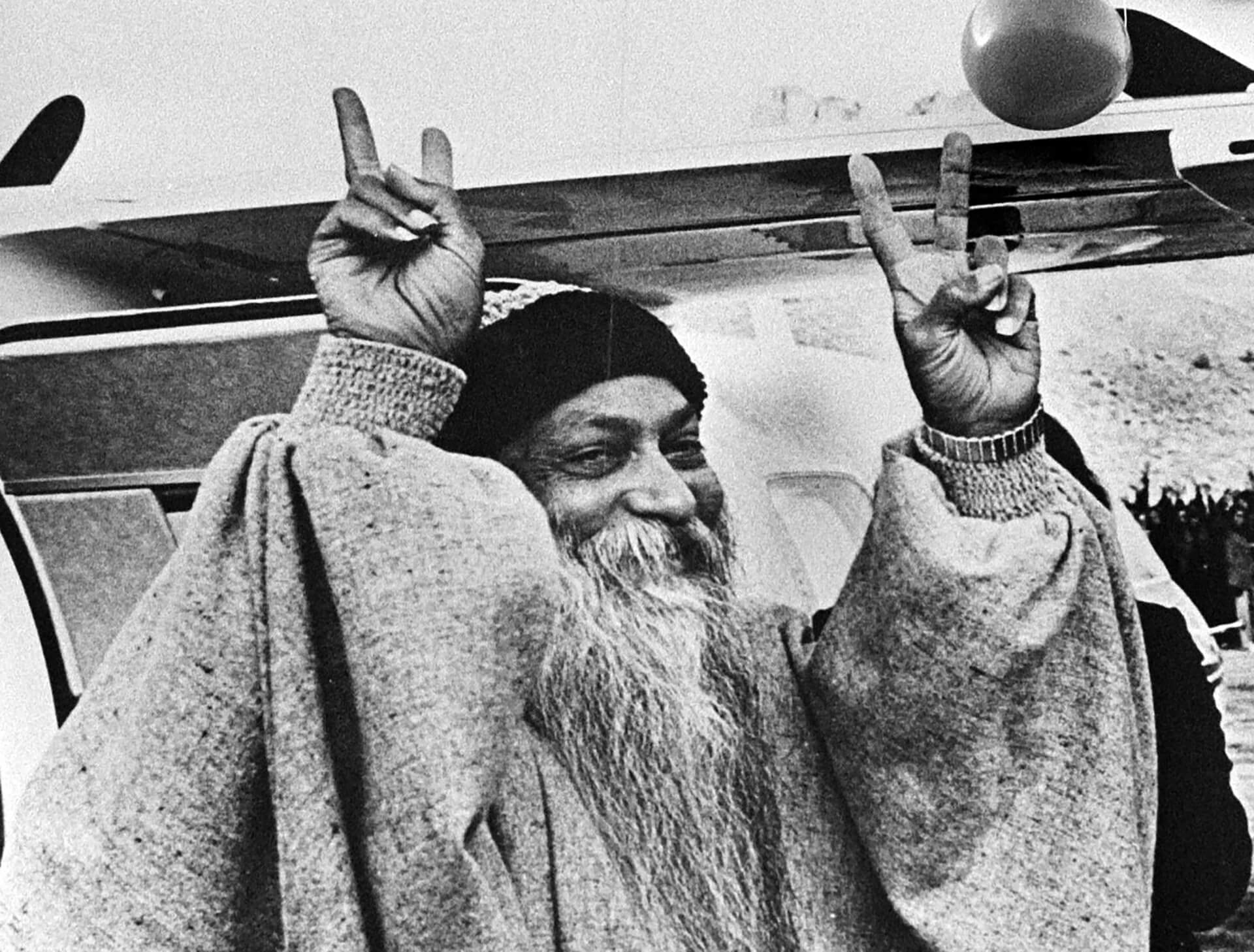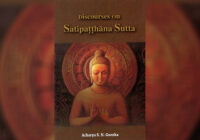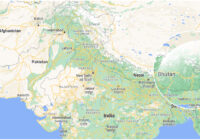In a world marked by the incessant battles of organized religion and power-hungry politicians, a controversial mystic emerged. He challenged the status quo and urged individuals to break free from the shackles of dogma and herd mentality. Osho Rajneesh, often referred to simply as Osho, was a maverick spiritual teacher who defied traditional norms, igniting adoration and controversy in equal measure.
A mold-breaking teacher
Born as Chandra Mohan Jain in 1931, Rajneesh grew up in a country deeply rooted in ancient spiritual traditions. From a young age, he displayed a rebellious nature, questioning the religious assumptions and rituals that had long pervaded his native country of India. Rajneesh’s curiosity led him to explore various spiritual paths and philosophies, ultimately forming his own philosophy that defied categorization. He fused Eastern philosophy, primarily Buddhism, with elements of post-Freudian psychoanalysis, bringing the two together in a synthesis that was no mere eclecticism. His spirituality contained a message of sexual liberation.
As a spiritual teacher, Osho took the unequivocal stance that organized religion is a source of division rather than a means to true spiritual enlightenment. In his view, religions had become mired in rituals, losing their vitality. In his words, “When a religion is dead, it becomes ritualistic. When a religion is alive, it remains spontaneous.” Osho believed that religion should be a search for peace, a personal journey towards self-realization and liberation, without the pursuit of power that has plagued organized religions throughout history.
Osho’s iconoclastic teaching condemned both organized religion and politics, denouncing them as two sides of the same coin, driven by the desire to control. He argued that religious individuals, not institutions, were deserving of respect. For him, a truly religious person transcends the boundaries of any particular faith, embracing a divine connection that is universal and all-encompassing.
Spiritual awareness
Osho’s ability to articulate complex concepts in simple language, adorned with his earthy sense of humor, drew accolades from unlikely quarters. Khushwant Singh, the eminent author and historian, described Rajneesh as “the most original thinker that India has produced: the most erudite, the most clearheaded and the most innovative.” American author Tom Robbins stated that, based on his readings of Osho’s books, he was convinced Osho was the 20th century’s “greatest spiritual teacher”.
Meditation, for Osho, was the gateway to self-realization, a state of pure presence and awareness that went beyond thoughts, actions and judgments. “Meditation is just to be, not doing anything—no action, no thought, no emotion. You just are. And it is a sheer delight,” he said.
Meditation starts by being separate from the mind, by being a witness. That is the only way of separating yourself from anything. If you are looking at the light, naturally one thing is certain: you are not the light, you are the one who is looking at it. If you are watching the flowers, one thing is certain: you are not the flower, you are the watcher.
Watching is the key of meditation. Watch your mind.
Don’t do anything – no repetition of mantra, no repetition of the name of god—just watch whatever the mind is doing. Don’t disturb it, don’t prevent it, don’t repress it; don’t do anything at all on your part. You just be a watcher, and the miracle of watching is meditation. As you watch, slowly mind becomes empty of thoughts; but you are not falling asleep, you are becoming more alert, more aware. So you can say meditation is another name of watching, witnessing, observing – without any judgment, without any evaluation. Just by watching, you immediately get out of the mind.
One of Osho’s best-known practices, “dynamic meditation,” is a practice that combines intense physical movement and stillness to cultivate inner growth and awareness. It consists of five stages: breathing, catharsis, physical activity, silence, and celebration. In the first stage, deep, chaotic breathing releases stagnant energy. The second stage involves catharsis, allowing emotions and tensions to be expressed freely. Then, the third stage focuses on vigorous physical movements, shaking off accumulated stress. This is followed by silence, where participants observe and witness their inner state.
As this author can personally testify, the psycho-spiritual benefits of dynamic meditation are numerous. The active stages release repressed emotions, leading to emotional catharsis and increased self-awareness. It helps in breaking through mental patterns and conditioning, creating a sense of freedom and spontaneity. The practice also enhances body-mind integration, promoting a deep connection with the present moment.
So much more than a “sex guru”
Osho’s teachings on sexuality stirred heated debates and controversies. In his book, From Sex to Superconsciousness, he advocated for the transformation of raw sexual energy through meditation rather than repression, as he believed that suppressing natural desires led to obsession and perversion. Osho lamented being labeled a “sex guru” by those who fixated on this aspect of his teachings, highlighting that his extensive body of work encompassed a wide range of subjects beyond sex.
“Out of my three hundred books only one book concerns sex, and that, too, not in its totality” he once said in an interview. “Just the beginning of it is concerned with sex; as you go deeper in understanding it moves towards super-consciousness, towards samadhi [integration]. Now that is the book which has reached to millions of people. It is a strange phenomenon: my other books have not reached to so many people … Why so much emphasis? People are obsessed, particularly the religious people are obsessed. This label of ‘sex guru’ comes from religious people.”
Perhaps the most notorious chapter in Osho’s life was his establishment of a spiritual commune in Oregon, United States, during the 1980s. The commune, known as “Rajneeshpuram”, aimed to create a utopian society where Osho’s teachings could flourish. Its ambitious scope and unconventional practices attracted both devoted followers and staunch critics. These have been well chronicled in the Netflix docu-series Wild Wild Country.
The commune’s acquisition of an impressive collection of ninety-three Rolls Royce automobiles became a controversial symbol, capturing media attention. Osho defended this flamboyant display, explaining that it was a strategic means of bridging the gap between his teachings and the world’s fascination with materialistic desires. “It simply shows the mind of the world. The world is not interested in truth; the world is interested in something sensational. Truth is not sensational. The world is not interested in enlightenment; the world is more interested in Rolls Royces,” he said. “I wanted the world to know that we have ninety-three Rolls Royces because that is the only way to make any bridge to the world. And then I can talk about truth and enlightenment too, by the side. Without Rolls Royces there is no communication at all. I know my business perfectly well.”
As Tom Robbins put it, “A lot of people don’t get the punchline. How many, for example, realized that his ridiculous fleet of Rolls-Royces was one of the greatest spoofs of consumerism ever staged?”
A prominent controversy at Rajneeshpuram was the power struggle within the commune, one which ultimately led to legal troubles. Ma Anand Sheela, Osho’s former personal secretary and spokesperson, emerged as a central figure in the commune’s administration. Sheela’s book, Don’t Kill Him! The Story of My Life with Bhagwan Rajneesh, chronicles her time in the commune and sheds light on the inner workings, including the fierce competition for power and control. Sheela later faced legal charges related to wiretapping, immigration fraud and the infamous bioterror attack in Oregon. These events raised questions about the ethical conduct of the commune’s leadership.
Osho himself kept a distance from the controversies surrounding the commune, asserting that he was not involved in the day-to-day management. He maintained that he was primarily a spiritual teacher, emphasizing personal transformation and self-realization. As a response to the controversies, Osho offered insights on power dynamics, human conditioning, and the challenges of communal living.
Osho returned to India in July 1986 after spending several years in the United States. One of the main reasons for his return was a combination of legal troubles and strained relations with the American authorities. He faced charges related to immigration fraud and violations of land use regulations at his commune in Oregon. Seeking a fresh start, Osho returned to India, specifically to his ashram in Pune. During his final years, Osho focused on guiding his followers and disciples through discourses, meditation sessions and individual counseling.
Osho’s teachings were wide-ranging, encompassing spirituality, philosophy, psychology and human consciousness. He continued to attract a large international following, and his Pune ashram became a hub for seekers from around the world.
The last years of Osho’s life were marked by declining health. He suffered from various ailments, including diabetes and asthma, which eventually led to his passing on January 19, 1990. Despite his physical departure, Osho’s message to the world, encapsulated in his words and actions, remains a powerful call to embrace our individuality, question the established order, and embark on a journey towards self-realization, liberation and the pursuit of peace.
[Anton Schauble edited this piece.]
The views expressed in this article are the author’s own and do not necessarily reflect Fair Observer’s editorial policy.
Support Fair Observer
We rely on your support for our independence, diversity and quality.
For more than 10 years, Fair Observer has been free, fair and independent. No billionaire owns us, no advertisers control us. We are a reader-supported nonprofit. Unlike many other publications, we keep our content free for readers regardless of where they live or whether they can afford to pay. We have no paywalls and no ads.
In the post-truth era of fake news, echo chambers and filter bubbles, we publish a plurality of perspectives from around the world. Anyone can publish with us, but everyone goes through a rigorous editorial process. So, you get fact-checked, well-reasoned content instead of noise.
We publish 2,500+ voices from 90+ countries. We also conduct education and training programs
on subjects ranging from digital media and journalism to writing and critical thinking. This
doesn’t come cheap. Servers, editors, trainers and web developers cost
money.
Please consider supporting us on a regular basis as a recurring donor or a
sustaining member.
Will you support FO’s journalism?
We rely on your support for our independence, diversity and quality.







Comment